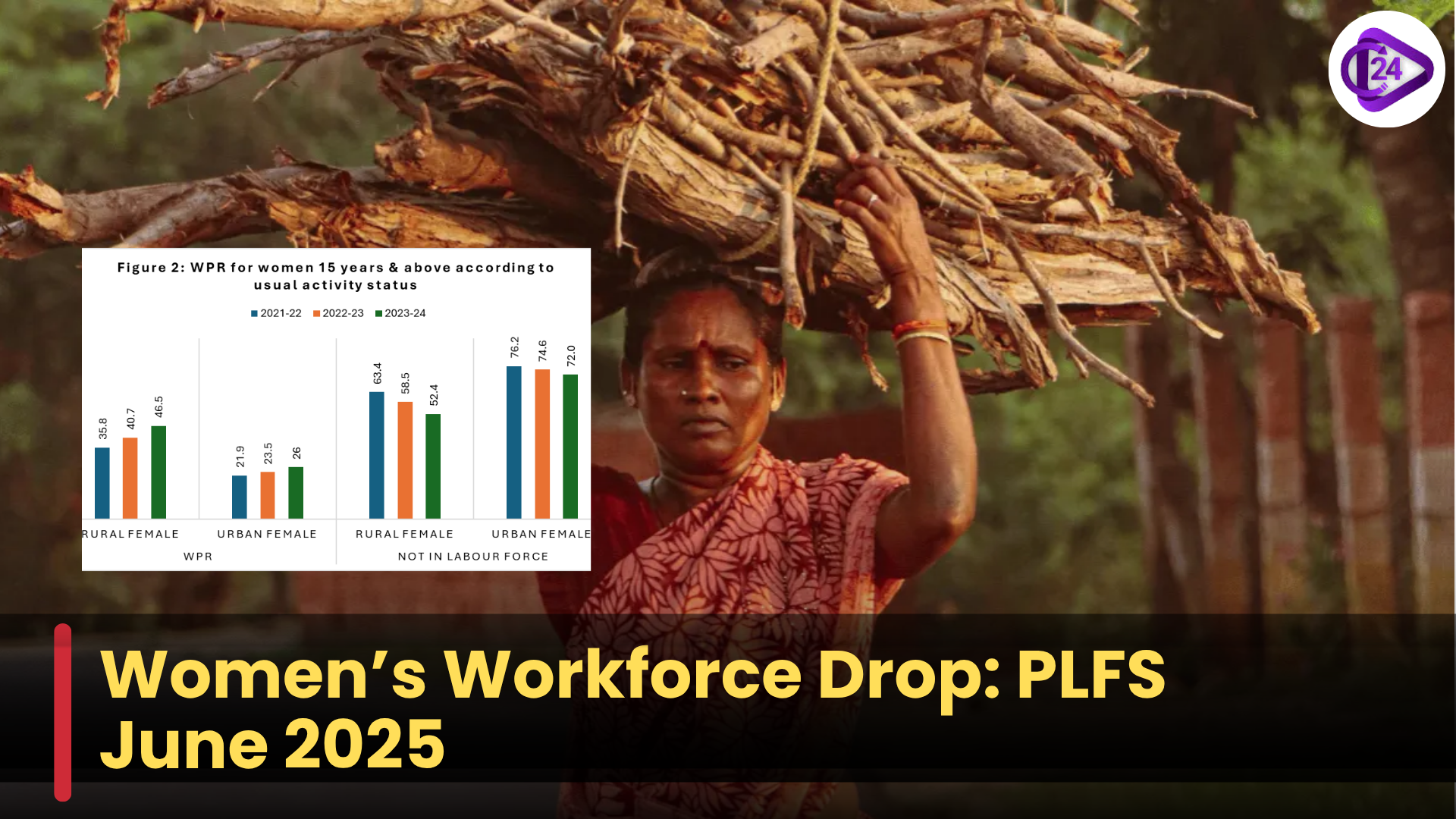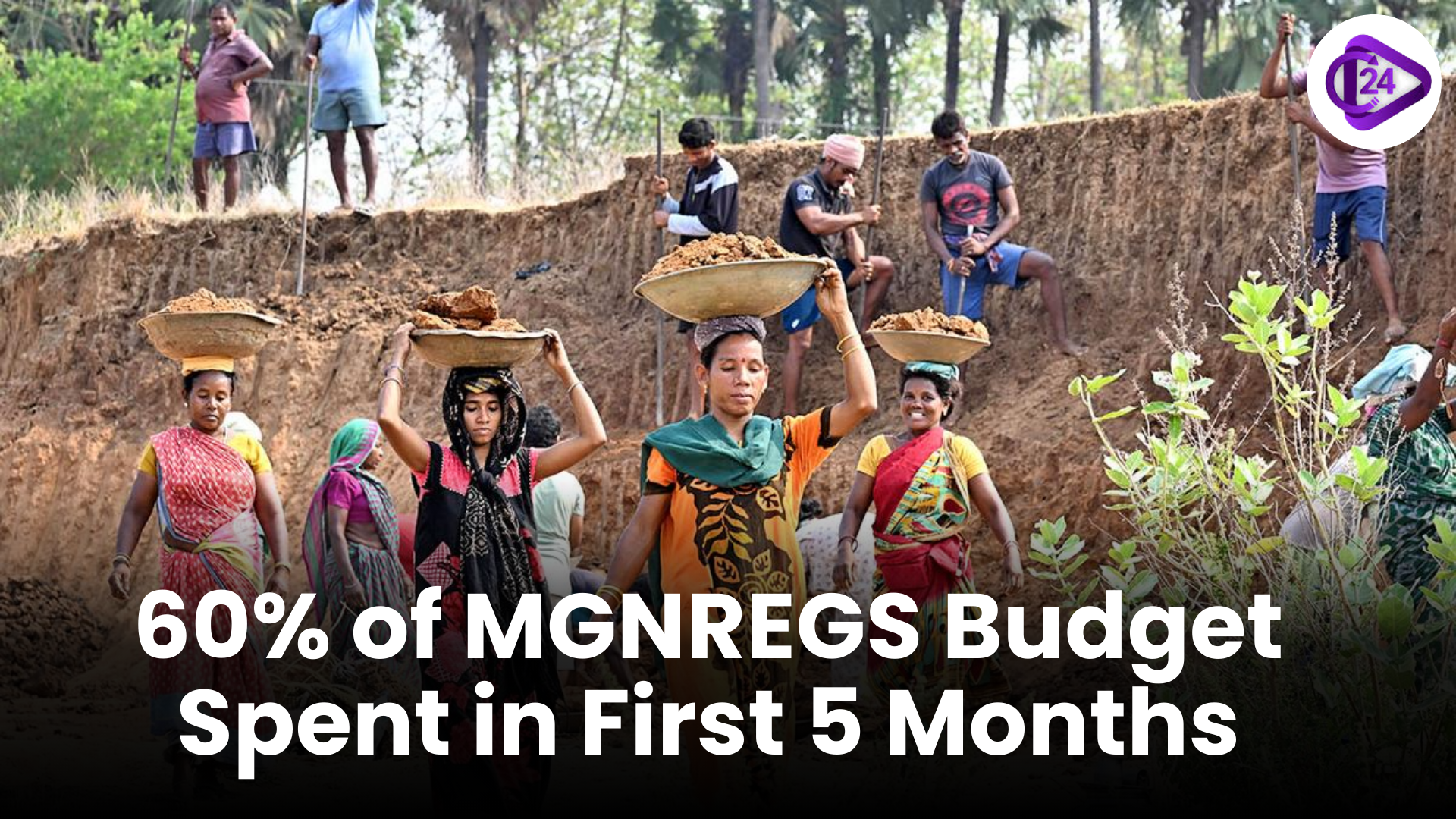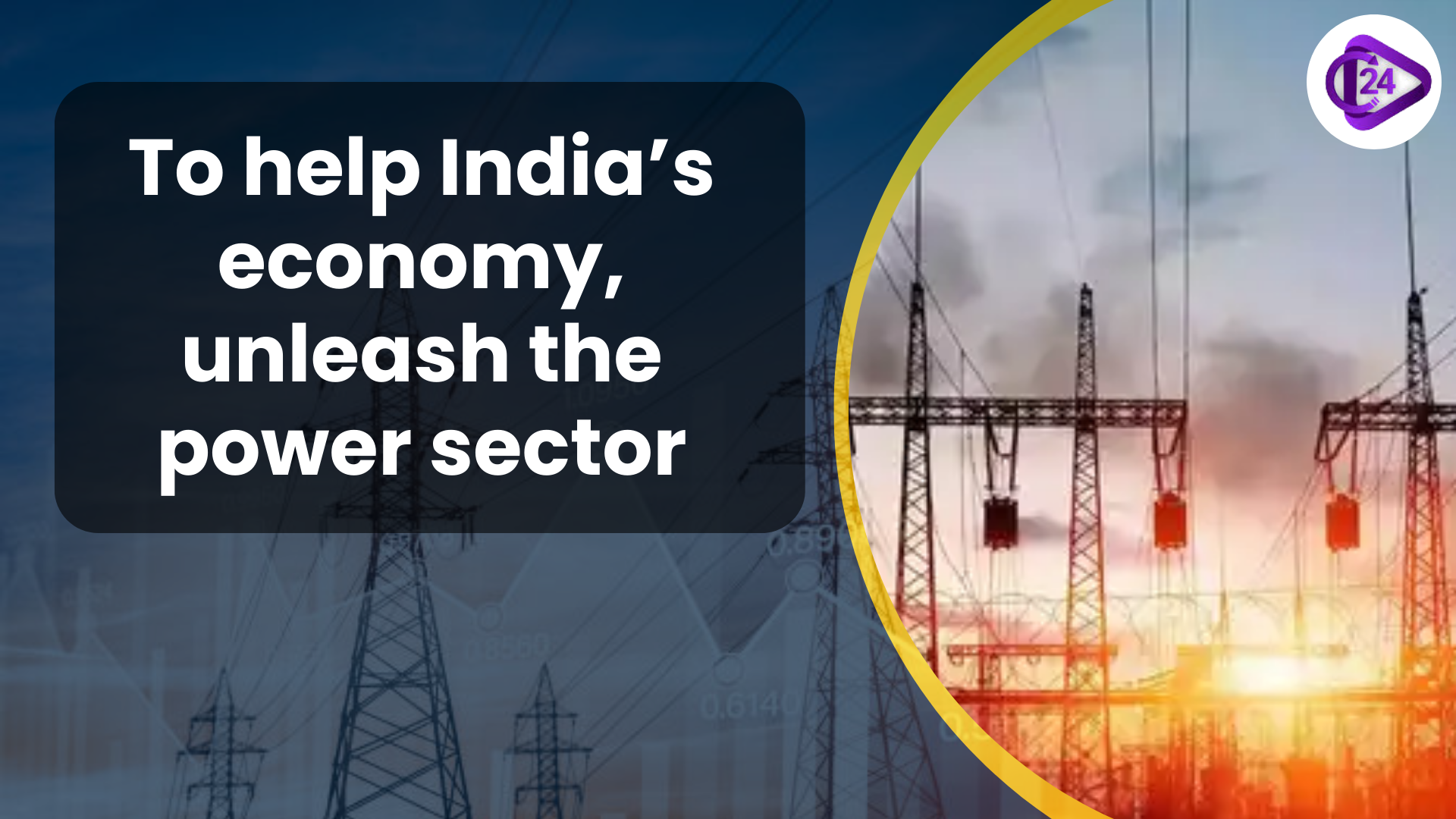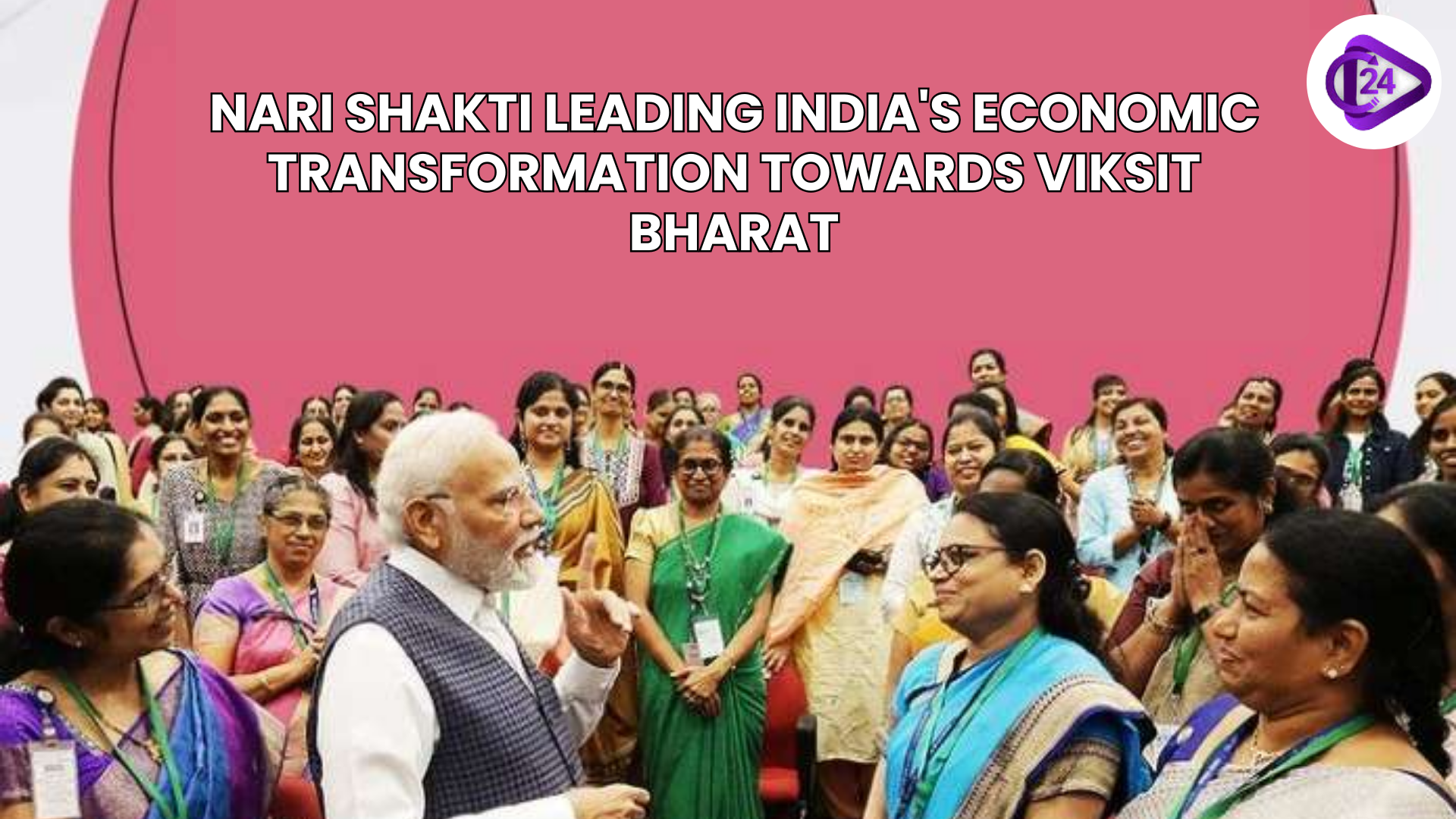
Periodic Labour force survey June 2025 shows that there was a reduction in women participation in the labour force in both the urban and rural regions. Female total LFPR among the aged 15+ dropped to 35.2 % and 25 % in countryside and cities respectively compared with a better Figure in May. The government blames this on the seasonal agricultural trends, heat wave and a shift of unpaid female assistants into staying at home. The rate of unemployment did not change significantly, coming at 5.6 %. There was a slight drop in female unemployment. The evidence brings to question the labour dynamics and the patterns of employment based on gender differentiation and gender relations.
Context
-
In a bid to gauge the employment indicators like Labor Force Participation Rate (LFPR), Worker Population Ratio (WPR), Unemployment Rate (UR), the Ministry of Statistics and Programme Implementation (MoSPI) conducts the PLFS (Periodic Labour Force Survey) on a monthly basis.
-
These are critical data that can be used in tracking labour market trends and in formulating gender sensitive and area specific employment policy.
Key Points:
Reduction in Female LFPR (15+ Age Category):
-
Rural Women:
-
June: 35.2%
-
May: 36.9%
-
April: 38.2%
-
-
Urban Women:
-
June 25.0%
-
May: 25.3%
-
Combined (All Age Groups, Rural + Urban):
-
June: 24.5%
-
May: 25.5%
Reasons for Decline (as per Govt.):
-
Seasonal agriculture cycle (post-Rabi, pre-Kharif downtime)
-
Extreme summer heat, limiting outdoor work for women
-
Drop in rural inflation, reducing pressure on women from higher-income households to work
-
Shift of unpaid helpers back to household/domestic responsibilities
Other Employment indicators:
-
LFPR(15+ years):
-
June: 54.2 %
-
May: 54.8 %
-
-
Male LFPR:
-
Rural: 78.1 % (as opposed to 78.3 % in May)
-
Urban: 75 % (85.1 % in May)
-
Employment Higher than 15 years:
-
In general: 5.6% (comparable with May)
-
Female UR: Moderate negative change of 0.1 %
-
Male UR: Did not change
Change of Employment in Agriculture Sector:
-
Agriculture rural female labor:
-
May: 70.2 %
-
June: 69.8 %.
-
Conclusion
According to the June 2025 PLFS report, there is a worrying decline in the participation of women in the economy, especially rural counterparts, brought about by seasonal and socio-economic pressures. Although short-term processes such as heat and crops could justify the dip, the continuing of such tendencies suggests underlying gendered structural problems in the Indian labour market. To curb this trend, policymakers should now appreciate diversified rural jobs, education and skill building programmes, and inclusion job creation to achieve even economic growth.



 Bihar Cabinet Approves Mukhya Mantri Mahila Rozgar Yojana to Empower Women Entrepreneurs
Bihar Cabinet Approves Mukhya Mantri Mahila Rozgar Yojana to Empower Women Entrepreneurs Nearly 60% of MGNREGS Budget Already Spent in First 5 Months of Financial Year
Nearly 60% of MGNREGS Budget Already Spent in First 5 Months of Financial Year India May Emerge as Second-Largest Economy by 2038 in PPP Terms: EY Report
India May Emerge as Second-Largest Economy by 2038 in PPP Terms: EY Report Unleashing India’s Power Sector: Key to Economic Competitiveness
Unleashing India’s Power Sector: Key to Economic Competitiveness Nari Shakti Leading India's Economic Transformation Towards Viksit Bharat
Nari Shakti Leading India's Economic Transformation Towards Viksit Bharat PM Modi to Inaugurate SEMICON India 2025 – India’s Biggest Semiconductor & Electronics Show
PM Modi to Inaugurate SEMICON India 2025 – India’s Biggest Semiconductor & Electronics Show Private Sector Share in Defence Production Increases to 22.5%
Private Sector Share in Defence Production Increases to 22.5% India’s First Sustainable Aviation Fuel (SAF) Plant – Used Cooking Oil
India’s First Sustainable Aviation Fuel (SAF) Plant – Used Cooking Oil India Becomes World’s Third-Largest Automobile Market: Nitin Gadkari
India Becomes World’s Third-Largest Automobile Market: Nitin Gadkari India’s Pesticide Market Sees Major Shift Towards Herbicides
India’s Pesticide Market Sees Major Shift Towards Herbicides






